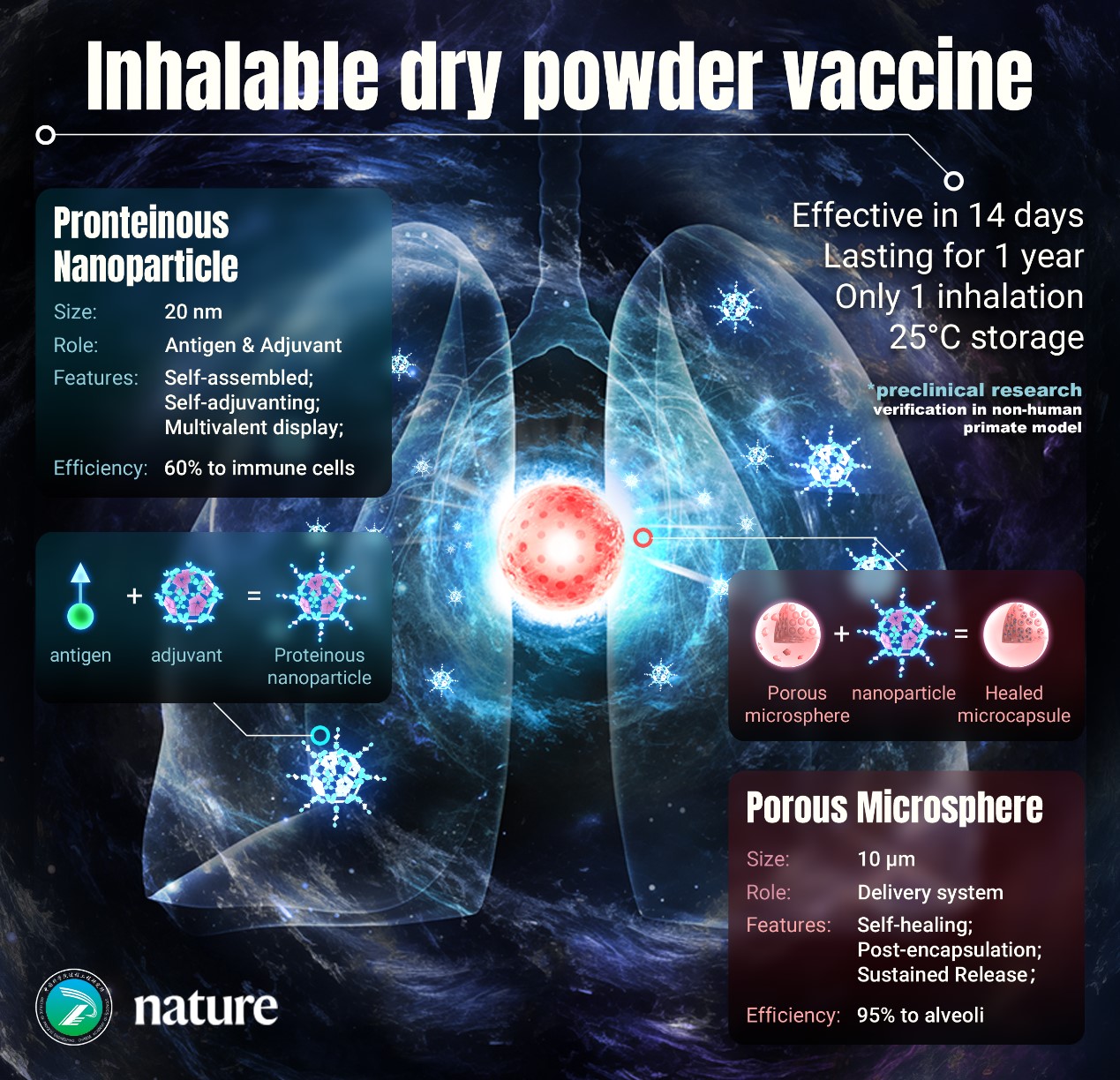| Dec 15, 2023 |
Researchers propose a new nano-micro composite delivery concept for inhalable vaccines
(Nanowerk News) Scientists from the Chinese Academy of Sciences' Institute of Process Engineering have introduced a novel vaccine delivery concept termed "nano-micro composite." Utilizing this concept, they have crafted an inhalable, dry powder vaccine platform, distinguished by nano-micro composite multilevel structures. Successfully tested in the laboratory, this vaccine has proven effective in preventing respiratory viral infections and their spread in animal models. This development is a significant stride in tackling emerging and epidemic infectious diseases.
|
|
The study was published in Nature ("Inhaled SARS-CoV-2 vaccine for single-dose dry powder aerosol immunization").
|
 |
| Construction of single-dose, dry powder inhalation vaccine. (Image: MA Guanghui’s group)
|
|
In the quest to combat infectious respiratory diseases, significant advancements have been made in vaccine development. Traditional vaccines are generally given via intramuscular injection, which promotes a humoral immune response dependent on blood antibodies to counteract the virus. This method, however, does not activate a mucosal immune response or establish a strong defense in the respiratory system.
|
|
Current vaccines often use adjuvants like aluminum, which fail to trigger cellular immune responses and are less effective against rapidly mutating viruses. Furthermore, the liquid nature of these vaccines requires strict cold storage, and the multiple doses needed can hinder vaccination efforts.
|
|
Addressing these challenges calls for interdisciplinary collaboration and innovative approaches to create safer, more effective respiratory infection vaccines.
|
|
Professors WEI Wei and MA Guanghui of IPE, along with Professors WANG Hengliang and ZHU Li from the State Key Laboratory of Pathogen and Biosecurity, have pioneered a new vaccine platform. This platform integrates biodegradable microspheres with protein nanoparticles. These nanoparticles can display multiple antigens, eliciting a wide-ranging immune response and broadening the vaccine's protective scope. Its design also facilitates the rapid development of vaccines for various respiratory viruses.
|
|
This platform's unique structure ensures effective immune response activation in the lungs and efficient delivery. The antigen-loaded nanoparticles are readily absorbed by antigen-presenting cells.
|
|
The dry powder form of this vaccine greatly reduces storage and transportation costs, making it ideal for areas with limited refrigeration, thus enhancing vaccination rates.
|
|
Remarkably, a single inhalation of this vaccine triggers lasting humoral, cellular, and mucosal immunity. Collaborating with Prof. HE Zhanlong from the Institute of Medical Biology at the Chinese Academy of Medical Sciences, the team developed models demonstrating the inhaled vaccine's effectiveness in preventing virus infection and transmission.
|
|
Prof. WEI Wei highlighted that the vaccine's components, comprising natural proteins and approved polymers, have been thoroughly evaluated for efficacy and safety in non-human primates, showcasing its potential for clinical application.
|

